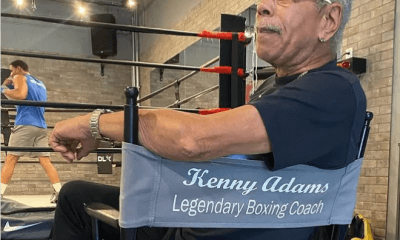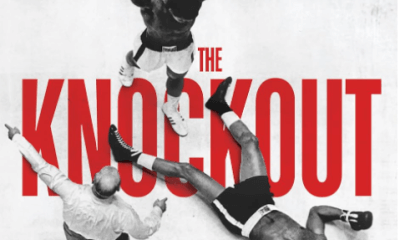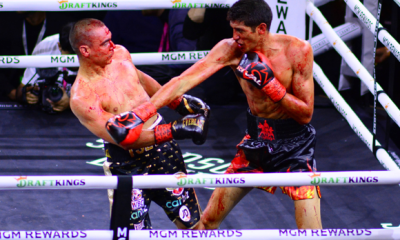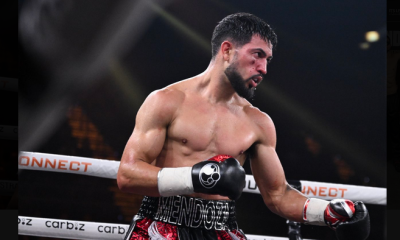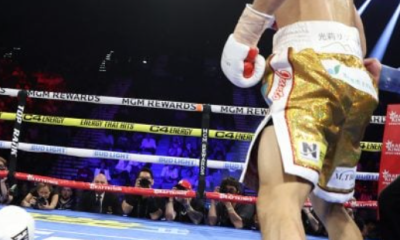Featured Articles
Fast Results – Carl Frampton & Amir Khan Win U.K. Homecomings
On a very busy international weekend for the Sweet Science, popular former two-division world champion Carl Frampton paid his immense respect
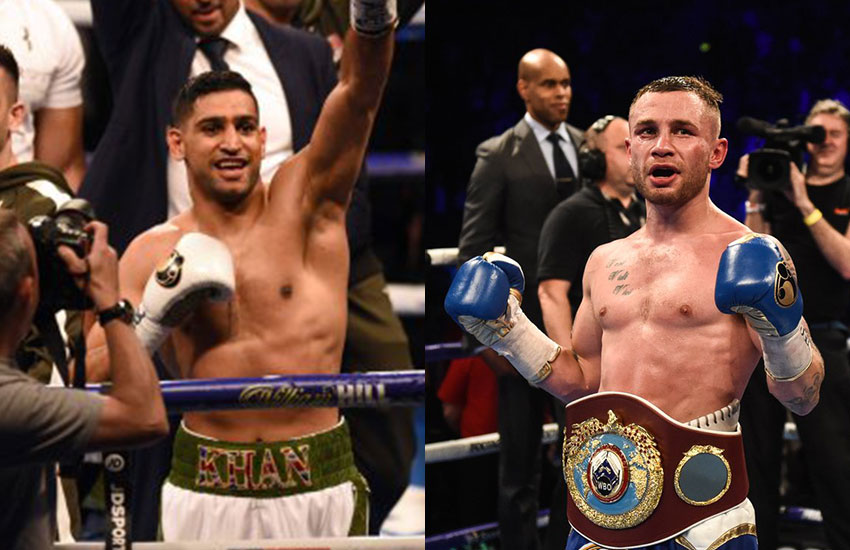
On a very busy international weekend for the Sweet Science, popular former two-division world champion Carl Frampton paid his immense respect to 35 -year-old Nonito Donaire by conclusively defeating the former four-division world champion via unanimous decision on Saturday night at the packed SSE Arena in his hometown of Belfast, Northern Ireland. There were no knockdowns. All three official judges’ scores in favor of Frampton were 117-111.
“I stuck to the game plan,” said the winner.
After a feel-out first, swelling began to appear under the left eye of Donaire in the second, a result of Frampton’s stutter-step right hands. By the third, Frampton was boxing very well and working in the left hook to Nonito’s now nicked nose. As the fight continued, Frampton never stood in range of Donaire long enough to get caught with anything too serious. The aging Donaire was always a step behind his opponent; failing to let his hands go often enough.
In the fifth round, Donaire landed a trio of clean left uppercuts with his own back on the ropes. Unfazed, Frampton returned fire in the sixth with more flush right hands to the damaged left eye of Donaire. In the seventh, Donaire suddenly turned his back for a flash and then nearly turned the tables on Frampton with another strong (right) uppercut that buzzed the Irishman good.
Television replay revealed it was an accidental head clash that caused Donaire to turn away from Frampton, pawing at a fresh slice over his right eye. Nonito’s face was a frightful mess.
Frampton then went on cruise control for the remainder of the fight. A Donaire left hook in the eleventh did hurt Frampton (he admitted it afterwards) but it was too little too late. The festive arena atmosphere in Belfast was electric with approximately nine thousand fans of Frampton singing in a “Frampton Wonderland” for a return to the top for their once beaten Irish “Jackal.”
With the victory, Frampton, a prime 31 and peaking as a professional, won the interim WBO featherweight championship and he moves a step closer to a full-on world title tilt with Oscar Valdez at the 18K seat capacity Windsor Park in Belfast and/or a rubber match with Mexican arch rival Leo Santa Cruz, holder of the WBA featherweight title belt briefly worn by Frampton.
Frampton improves to 25-1 (14) while Donaire sees his record slip to 38-5 (24). It was Frampton’s first fight with new trainer Jamie Moore after splitting with the McGuigan clan.
Donaire, Fighter of the Year in 2012 with four wins in twelve months, lost his “Next Manny Pacquiao” mojo in 2013 to Guillermo Rigondeaux. He was then brutally stopped in 2014 by Nicholas Walters. In 2016, Jessie Magdaleno handed him a unanimous decision loss to defend his WBO 122 lb. title. “Donaire is a still dangerous mofo,” Frampton let slip of the Filipino Flash.
Retirement now looks likely for Donaire.
Promoter Frank Warren announced that he is indeed taking Frampton to Windsor Park in August, a dream come true for Frampton. “I can’t wait to get there,” he said of the venue.
Aired on BT Sport in the U.K. and on the Showtime’s YouTube channel in the U.S., Frampton weighed in at 125 1⁄4 while Donaire tipped the scales at 125 1⁄2.
On the Belfast undercard Zolani Tete successfully defended his WBO bantamweight championship, defeating a badly faded Omar Narvaez by unanimous shutout decision. All three judges saw it 120-108 for Tete. At 42, the Argentine Narvaez is a dozen years older than his peaking South African conqueror. Narvaez offered little more than a strong survival instinct.
In Liverpool, Amir Khan won his first match in nearly two years, scoring an easy homecoming TKO in one round of Canadian invader Phil Lo Greco at the sold-out Echo Arena. Exactly 9,351 fans spent exactly 39 seconds watching Khan thrown combinations at his overmatched target.
The bout was contested at a 150 lb. catchweight which both boxers made with ease. A bone dry Lo Greco was knocked down 15 seconds into the bout from a solid right hand to the head. Khan then pounced on his wounded opponent and a fast flurry from the Bolton native sent Lo Greco down again into the ropes where referee Victor Loughlin stopped it at :39 of the opening round.
It was Khan’s first bout in the United Kingdom since 2013. With substitute trainer Joe Goossen in his corner, Khan made a statement, free of mistakes and chin checks. Before the comeback bout, Amir promised to “beat Phil and beat him well.” Mission accomplished. Back to business.
In the fight buildup, Khan stated he couldn’t see anything going wrong against Lo Greco and it didn’t. Khan was barely touched, if at all. Aired on Sky Sports in the U.K. and Top Rank ESPN+ in the U.S., Khan improves his ring record to 32-4 (19) while Lo Greco fell to 28-4 (15).
“I didn’t want it to go the distance,” said Khan during the post-fight interview. “I came in to do a clinical job. I saw the opening, right hand, left hook combination, and I finished him off. I want to give the fans in England the best fights. I want to fight the best welterweights out there. I will fight and beat Kell Brook if it ever comes down to that,” he promised.
“Amir Khan is back with a big bang!”
“I love a Khan-Brook fight,” said premier promoter Eddie Hearn. “It’s what the British public wants and we should deliver what the British public want.”
Check out more boxing news on video at The Boxing Channel
-

 Featured Articles3 weeks ago
Featured Articles3 weeks agoVito Mielnicki Jr Whitewashes Kamil Gardzielik Before the Home Folks in Newark
-

 Featured Articles4 days ago
Featured Articles4 days agoResults and Recaps from New York Where Taylor Edged Serrano Once Again
-

 Featured Articles1 week ago
Featured Articles1 week agoFrom a Sympathetic Figure to a Pariah: The Travails of Julio Cesar Chavez Jr
-

 Featured Articles3 days ago
Featured Articles3 days agoResults and Recaps from NYC where Hamzah Sheeraz was Spectacular
-

 Featured Articles4 weeks ago
Featured Articles4 weeks agoCatching Up with Clay Moyle Who Talks About His Massive Collection of Boxing Books
-

 Featured Articles1 week ago
Featured Articles1 week agoCatterall vs Eubank Ends Prematurely; Catterall Wins a Technical Decision
-

 Featured Articles4 days ago
Featured Articles4 days agoPhiladelphia Welterweight Gil Turner, a Phenom, Now Rests in an Unmarked Grave
-

 Featured Articles3 weeks ago
Featured Articles3 weeks agoMore Medals for Hawaii’s Patricio Family at the USA Boxing Summer Festival

